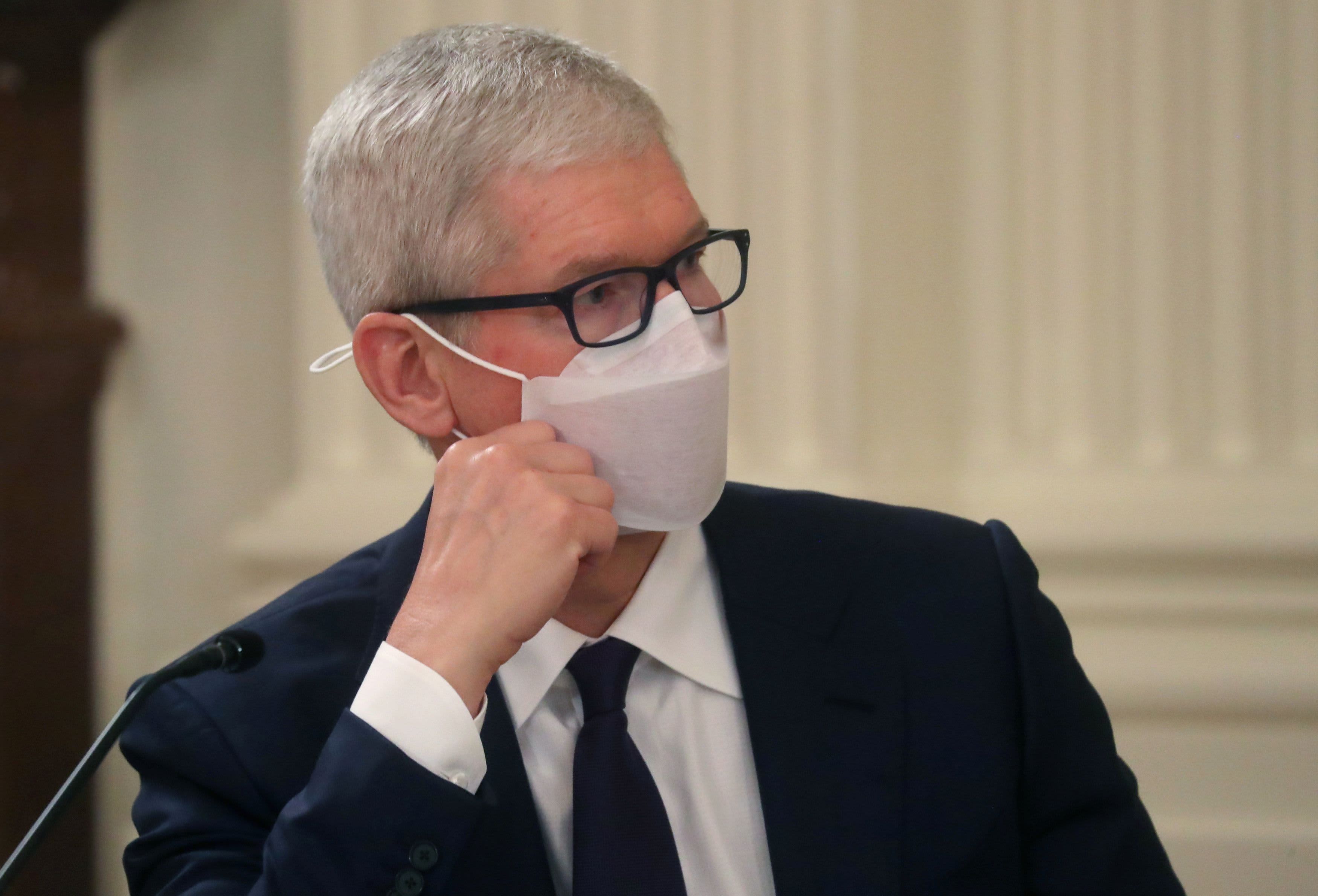Google thinks smartwatches are the future again — are you buying it?
The Pixel Watch is mostly a Fitbit — but that’s just the start of the plan. | Photo by Vjeran Pavic / The VergeGoogle has been right about wearables for nearly a decade. Now, the company swears it’s serious...
/cdn.vox-cdn.com/uploads/chorus_asset/file/24069436/226324_Google_event_hands_on_vpavic_0014.jpg)
Why did Google take so long to build a smartwatch? When I asked that question to Rick Osterloh, Google’s SVP of hardware and the man in charge of all things Pixel, his answer was one word: Fitbit. Google couldn’t make the smartwatch it wanted without a killer health and fitness platform, and until very recently, it simply didn’t have one.
“We wanted to make a watch earlier,” Osterloh tells me over Google Meet, a few days ahead of Google’s official launch of the new Pixel Watch and Pixel 7 phones. He’s wearing a Pixel Watch on his left wrist, and both a Pixel 7 and the upcoming Pixel Tablet sit in front of him on his desk. “And we probably would have, if not for the fact that we didn’t have what we thought were the right capabilities for health and wellness.” That’s why Google agreed to acquire the fitness tracker company in 2019 for $2.1 billion — but the deal didn’t close until early 2021, and until then, Google couldn’t do any work to integrate or improve Fitbit’s features.
Once Osterloh and his team were able to start working with the Fitbit crew, though, things came together quickly. “The Pixel Watch proposition was really quite simple,” he says. “It’s like, offer terrific health and wellness insights through the Fitbit app, bring the best of Google and the core Google apps to the tool, and then put that together in a beautiful design.” The Pixel Watch is meant to be a great fitness device, an object of style and fashion, and a Google Assistant on your wrist — roughly in that order. “The killer app on watches today is definitely health and fitness,” Osterloh says.
But in the long run, Google sees the smartwatch as much more than that. In Google’s vision of ambient computing, all your devices work together in perfect harmony to make your life easier. A wearable computer — that knows where you are, what you’re doing, and how you’re feeling — is crucial to making the system work. Even AR glasses won’t understand you the way a device like the Pixel Watch could. Over time, Google sees the smartwatch becoming just as important as the phone.
If you’re getting a sneaky feeling of déjà vu right now, there’s a good reason for that. We’ve heard so much of this story — about the potential for smartwatches and Google’s belief in a more personal future of computing — before. Google had a lot of big ideas about smartwatches nearly a decade ago, and those ideas were proven largely correct. But it was Apple doing the proving, as the Apple Watch became a hit while Android-powered watches largely failed, and Google never even made its own flagship device.
We’ve heard so much of this story — about the potential for smartwatches and Google’s belief in a more personal future of computing — before
Now Google swears it’s serious about smartwatches, again, for real. The vision is still big and exciting. But Google is famous for killing products with reckless abandon, many of which it vociferously defends right until it swings the hatchet. Will anyone believe Google enough to buy into its vision this time? Should they, even?
Osterloh says yes. And he’s eager to prove it. He hopes he already has in the smartphone market as the company readies the seventh generation of the Pixel phone. Nobody asks him if Google’s serious about phones anymore, he says, but “some of these categories are new for us, and we have to share the same determination in those categories. And we intend to.”
What Google needs more than anything is for the Pixel Watch to succeed as the best Fitbit ever made. That just might buy Google enough time to build the smartwatch it imagines.
Photo by Vjeran Pavic / The Verge
The future, again
Google’s first foray into smartwatches started out relatively promising. In early 2014 — when there were rumors of an “iWatch” but the Apple Watch didn’t yet exist — the company launched a software platform it called Android Wear. Almost immediately, LG, Motorola, Samsung, and others said they planned to make Android-powered smartwatches.
At the I/O developer conference that year, then-head of Android Sundar Pichai explained why wearables were part of the future of computing. “Users increasingly are living in a multiscreen world,” he said, and Google had a unique opportunity to “create a seamless experience across all your connected devices.” He laid out four principles for Google’s approach to this ecosystem: everything is contextually aware; voice is a core input tool; everything should be seamless; and your phone is the center of the universe.
David Singleton, then the director of engineering at Android, then spent the next 20 minutes explaining how Android Wear would work. He called the smartwatch “a powerful computer small enough to wear comfortably on your body all day long” and told developers they’d have access to “precisely the same tools we’re already familiar with on Android phones and tablets.” He showed off three new devices, from Motorola, LG, and Samsung, and promised many more were coming soon.
That was as buzzy as Google-powered smartwatches ever were. For the next half-decade, Google followed a pattern: seemingly forget about the platform altogether, only to arrive with a few updates and a promise that the company still cared about wearables, then forget again. In 2018, Android Wear became Wear OS, and later that year, Google released Wear OS 2.0. But even by then, there were few new Wear OS devices of note, few new feature updates worth caring about, and little evidence that Google was invested in its smartwatch business. In 2021, Google made another gesture toward caring with the launch of Wear OS 3 alongside Samsung’s Galaxy Watch 4, which made it seem like Google was perfectly content to have Samsung’s hardware be Apple’s main competitor. Heck, it seemed happy a company wanted to make that hardware.
I tell you all this history because it’s important to understand that the only thing that has changed about Google’s smartwatch strategy is how much Google seems to care about it. Pichai’s ideas about context and seamlessness, about the power of voice — all that is as true and as central to the plan as ever. One thing that has changed is how Google sees your phone; Google now imagines Assistant and its cloud services as the connective tissue for all your devices rather than the slab of glass in your pocket. But for all intents and purposes, Google was largely right about smartwatches almost a decade ago. And while Apple has proved Pichai’s theories right, Google can’t seem to care long enough to try.
For now, at least, smartwatches are health and fitness devices. And if Google wants to have a chance at winning the next generation, it has to compete in this one
But around 2018, Google seemed to have made a crucial realization: smartwatches might someday be the computers of the future, but they’re not there yet. For now, at least, smartwatches are health and fitness devices. And if Google wants to have a chance at winning the next generation, it has to compete in this one. And that requires turning the Pixel Watch into one hell of a Fitbit.
The Fitbit Pixel
Buying Fitbit wasn’t Google’s only new investment in smartwatches. A few months before that acquisition, it agreed to spend $40 million for some of Fossil’s smartwatch tech and some of its R&D team. In 2021, it convinced Samsung to merge its Tizen wearable OS with Wear OS. Under Osterloh, the company had clearly recommitted to the idea that wearables were worth Google’s time.
But the Fitbit deal really unlocked Google’s plans. Once the acquisition closed, the team immediately began work on integrating its hardware and software into the Pixel Watch. Osterloh says the work was “fast and furious.” The two teams found a surprising number of ways in which they complemented each other: Fitbit has spent years building its tech for interpreting signals coming out of the light sensors in its devices, and Google’s AI research teams have been working on ways to error-correct and improve the signals coming from those same kinds of sensors.
“And so one of the things we did in the development of this product,” Osterloh says, “was combine a bunch of work in our Google AI research team with the algorithm work from Fitbit to develop a heart-tracking baseline that’s super close to what you get out of a chest strap,” which is typically the best source of on-body biometric data. Osterloh, who says he’s a decade-long Fitbit user, has been testing the sensors himself, wearing a chest strap and a Pixel Watch simultaneously. “The accuracy level is incredibly high.”
Photo by Vjeran Pavic / The Verge
The Pixel Watch’s dual-processor setup is made with health tracking in mind, too, and borrows some ideas from Fitbit. “We’ve got the main SoC that’s running Android,” says Seang Chau, a VP on the Android team, “but then we have an MCU (short for microcontroller unit), similar to Fitbit, that allows us to do one-second heart rate readings, all the time.” The Apple Watch measures heart rate every five minutes on average, but Fitbits — and now the Pixel Watch — do it practically continuously. “That allows us to really lean in on the health aspects because heart rate is the core of all the fitness data we’re extracting from.”
Elsewhere, the two teams worked to integrate the Fitbit app into the Pixel Watch’s small round interface and to connect the back-end data so the Pixel Watch’s blood oxygen and heart rate sensors automatically feed into a user’s Fitbit account. Fitbit is what stores and shows your heart rate, your “sleep score” and “daily readiness score” each morning, and all the workout and activity information users expect.
The acquisition also gave Fitbit what it needed to compete with the Apple Watch. Fitbit remains a popular and much-loved brand, but through the App Store and its virtual assistant, Apple was leaving it behind. Fitbit needed a hardware team that could design a device on par with Apple’s and give it more to do than just track workouts. That happened to be exactly what Google was ready to do.
The wrist-puter lives
The Pixel Watch may be largely Fitbit on the inside, but it was designed to look like something very different. With a domed, round face and a large set of interchangeable bands, it’s meant to be a stylish piece of jewelry as much as a rugged exercise companion. Its 41mm diameter is substantially smaller than the Apple Watch, and the watch as a whole feels more subdued. Classy, even. Osterloh loves the design. He says he doesn’t notice the big bezels — though some internet sleuths certainly did — and practically beams with pride as he looks at it. “It’s hard to make a design that looks beautiful in such a constrained form factor,” he says.
Right now, batteries and processing limitations mean there’s only so much you can do on a smartwatch. Google did a lot of work on the Samsung Exynos 9110 chip inside the Pixel Watch — there’s no Tensor chip here, at least not yet — but physics still largely dictate what a watch is capable of. That’s why it’s so important to get fitness and health right; that’s one thing smartwatches can already do well before so much else becomes possible. But if you believe Google’s going to be in this for the long haul, it’s clear the company sees that changing quickly.
Photo by Vjeran Pavic / The Verge
“I think increasingly, it becomes a more and more independent device,” Osterloh says, “that will start to take over more of the functionality of your phone or even a computer on your wrist.” He mentions smartwatches as a perfect smart home controller, a quick communication device — he even admits to being a “talk to your watch on speaker in the grocery store” guy, though he’s suitably embarrassed by this fact — and much more. “It’ll almost subsume all the capabilities you have in your phone,” he says, turning your phone into another screen but no longer your primary computing device.
The team also redesigned the Pixel Watch’s interface to show information without trying to get you to interact with it, knowing most people don’t want to spend all day tapping on their watches — and the watches can’t handle that anyway. Chau says he likes being able to quickly check his wrist when he gets notifications, especially because his Pixel Watch only allows through the most important ones. He connected his washer and dryer to the internet, and now his watch buzzes when the load is done. “Interruptions don’t stress me out anymore,” he says.
Then Chau pushes the vision even farther and gives a hint at Google’s biggest ambitions for its smallest devices. What if, he says, the information your smartwatch collects could even change the way you interact with your other devices? “If you have context for what users are doing on the phone and tie that to fitness data you’re seeing on the watch, maybe you could say, ‘Oh, anytime you’re on Instagram or TikTok, your heart rate goes up, and it takes you longer to fall asleep.’” Gadget makers have obsessively tried to find ways to use your data to inform your life, and strapping a heart rate monitor to your wrist is hard to beat.
What if the information your smartwatch collects could even change the way you interact with your other devices?
That kind of inter-device connectivity is what Pichai meant in 2014, what Osterloh has been working on since he rejoined the company in 2016 to build a hardware team, and what Google means when it talks about ambient computing. The mission hasn’t changed, and in many ways, neither have the tactics. Even Apple roughly agrees with Google’s vision. The only question is, will Google see it out this time?
The day after Osterloh and I spoke, Google announced it was killing Stadia, its game-streaming platform, after years of neglecting the service and months of aggressively denying it was going away. The Google Graveyard continues to expand, and users are becoming ever more wary of buying into Google’s big new ideas about the world.
But Osterloh says Google’s in this one for the long haul. It has what it needs for now, it’s ready for the future, and the roadmap is long. He’d just better hope he sells a few of them.

 JaneWalter
JaneWalter 
































